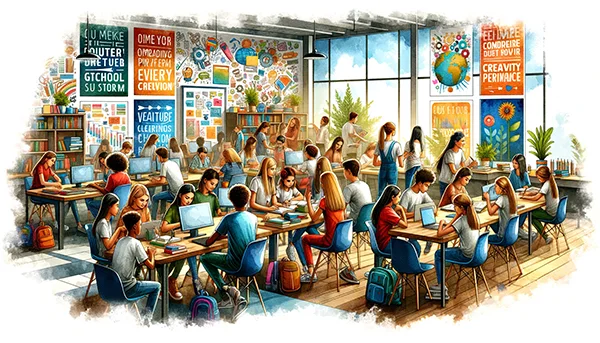
Understanding Procrastination
Procrastination is when we wait to do tasks, thinking we’ll have time later. It’s common among students, but it’s not just about poor planning. It’s more complex and involves feelings and confidence in doing tasks. Understanding procrastination, especially in teens, is a combination of their developmental stage, support environment, and mental well-being. This complexity makes navigating academic procrastination for parents even more challenging.
The Parental Perspective
Parents might feel upset if their child puts off school work, or fights to finish homework. This can lead to worries about grades and future chances which increases anxiety for everyone. Reducing this anxiety starts with understanding the root cause of a child’s procrastination. Before getting to the core of supporting a child with procrastination, we first want to see what some key research has to offer.
Insights from Research
Studies show several important things about procrastination:
- Students who believe in their ability to succeed (self-efficacy) and manage their feelings well tend to procrastinate less and do better in school (Hen & Goroshit, 2012).
- How students handle stress and their overall happiness can affect their study habits and grades (Vlachopanou & Karagiannopoulou).
- Choosing positive ways to stay motivated can reduce procrastination and improve well-being and grades (Grunschel et al.).
- Supportive parenting can boost self-esteem and reduce procrastination, helping students do better academically (Syeda S. Batool).
What is important to recognize in the research is that reducing anxiety and stress, empowering self-regulation, creating positive motivations and parental support are key to helping students procrastinate less.
Practical Advice for Parents
Here are eight points that might help you and your student learn to procrastinate less.
Encourage Emotional Management:
What helps: Teach your child relaxation techniques like deep breathing or meditation to manage stress before studying. Make this a routine and practice it often.
What hurts: Setting expectations for emotional management without practice. Mindfulness techniques only work when you do them regularly. Make it a routine part of your parental support.
Boost Academic Self-Efficacy:
Academic self-efficacy refers to a student’s belief in their ability to successfully complete academic tasks or succeed in academic settings. It includes the confidence students have in their skills to understand, learn, and perform at a certain level.
What helps: Celebrate small achievements to build their confidence in handling school tasks. Breaking goals into smaller achievements will reinforce the child’s abilities faster.
What hurts: Setting high expectations is fine but when there is no middle ground or goals that lead to the larger expectation, a child has only two options, fail or don’t fail. This si the breading ground for procrastination. I mean who would want to “hurry up and fail” if we don’t celebrate the process to get there?
Guide Through Stress:
What helps: Discuss different situations they find stressful and brainstorm solutions together. The biggest help for a child is to listen to their worries in a way that is not invalidating. Their worry, no matter how big or small, is their world.
What hurts: Expecting a child to manage their stress on their own is unrealistic. Even as adults we have high-stress periods of the day, week, and year. Helping your child see different types of stress requires different types of support and helps them critically think about their needs.
Teach Positive Self-Talk:
What helps: Encourage them to replace negative thoughts with positive ones, such as changing “I can’t do this” to “I can try my best.” An even better way to help a child is to teach them to consider alternative thoughts. Make this an activity of extremes by having your child come up with an outrageous positive and negative thought, then discuss why they are extreme.
What hurts: Ignoring, gaslighting, or invalidating their negative thought. When parents do this they are increasing the effect of negative thinking. Considering the purpose of the negativity by helping the child connect their emotion to the thought. This will help reframe the statements. For example, going from “I can’t do this” to “I am afraid I won’t do well” can then lead to a discussion about what the child is doing to support their fear.
Practice Supportive Parenting:
What helps: Show interest in their work at school. Empathize with their workload and let them know that you are there to help if they need it. Let the child know that no matter what, you will always love them, even if they struggle.
What hurts: Recognize your own needs and limitations as a parent. It’s okay to seek help and support when things get tough but avoiding your own struggles will influence your ability to support your child.
Build Self-Esteem:
What helps: Encourage participation in challenges. Acknowledge and praise the child’s efforts no matter how small and make sure your child knows that your love does not depend on their achievements or behavior. This secure foundation encourages them to explore, learn, and grow with confidence.
What hurts: In a longitudinal study of over 700 students, the researchers found that children are highly influenced by their parent’s conditional regard (Brueckmann et al., 2023). Parental conditional regard refers to the practice where parents show love and approval of their children based on certain conditions or achievements. Children who felt that their parent’s love was earned, showed lower self-esteem.
Create a Structured Schedule:
What helps: Predictability is the foundation of lower stress. Working with your child to develop a study schedule that includes time for breaks can empower them to manage their time effectively. Most importantly is helping a child measure the efficiency and make changes as necessary. For example, if studying for an exam every day for 20 minutes does not show results, make changes to the schedule until they find what works.
What hurts: Being productive is difficult with chaos for adults and children. School can be chaotic, homes can be chaotic, and if there is limited support the chaos takes over. Finding the best environment for your child to be productive. Once they find the best environment to be productive they will be motivated to maintain that routine.
Seek Professional Advice:
Not all situations require therapy but it never hurts to talk to someone. When I speak to parents about academic concerns, many times we first figure out the root cause. This might be grief, stress, depression, anxiety, or a learning challenge. The key to consulting with a therapist is to help determine what level of support your child may need based on that root cause. To learn more about how I conduct therapy with children and teens, please click here.
References:
Batool, S. S. (2020). Academic achievement: Interplay of positive parenting, self‐esteem, and academic procrastination. Australian Journal of Psychology, 72(2), 174–187. https://doi.org/10.1111/ajpy.12280
Brueckmann, M., Teuber, Z., Hollmann, J., & Wild, E. (2023). What if parental love is conditional …? Children’s self-esteem profiles and their relationship with parental conditional regard and self-kindness. BMC Psychology, 11(1), 322. https://doi.org/10.1186/s40359-023-01380-3
Grunschel, C., Schwinger, M., Steinmayr, R., & Fries, S. (2016). Effects of using motivational regulation strategies on students’ academic procrastination, academic performance, and well-being. Learning and Individual Differences, 49, 162–170. https://doi.org/10.1016/j.lindif.2016.06.008
Hen, M., & Goroshit, M. (2014). Academic Procrastination, Emotional Intelligence, Academic Self-Efficacy, and GPA: A Comparison Between Students With and Without Learning Disabilities. Journal of Learning Disabilities, 47(2), 116–124. https://doi.org/10.1177/0022219412439325
Vlachopanou, P., & Karagiannopoulou, E. (2022). Defense Styles, Academic Procrastination, Psychological Wellbeing, and Approaches to Learning: A Person-Oriented Approach. Journal of Nervous & Mental Disease, 210(3), 186–193. https://doi.org/10.1097/NMD.0000000000001423

